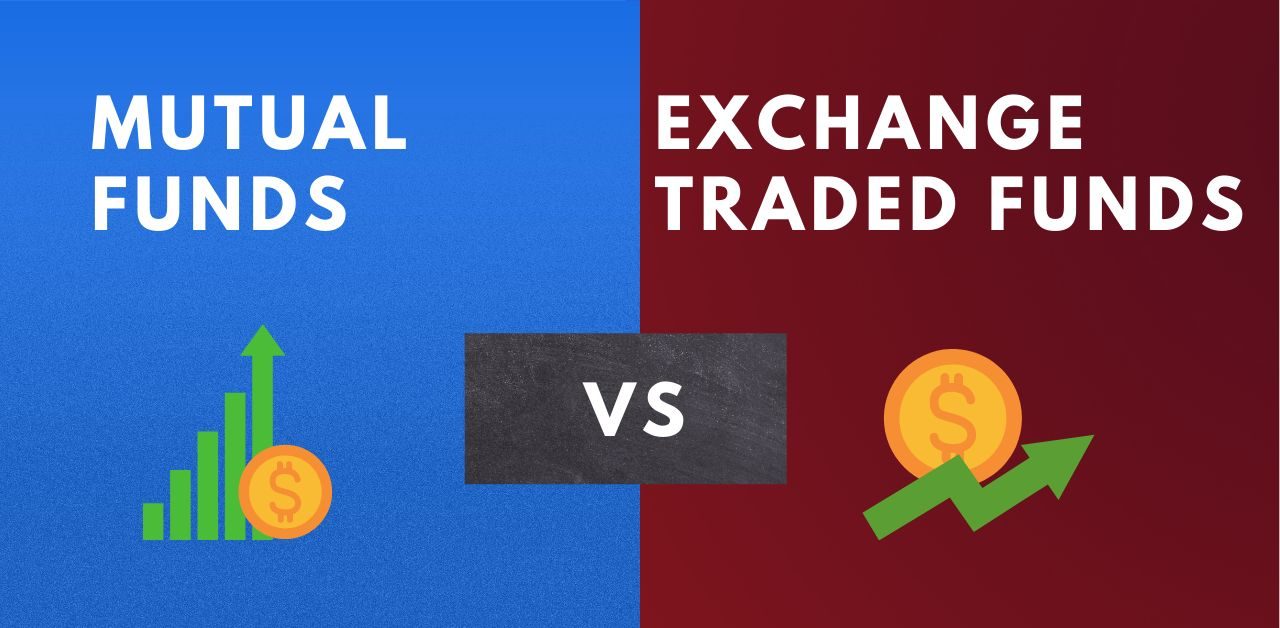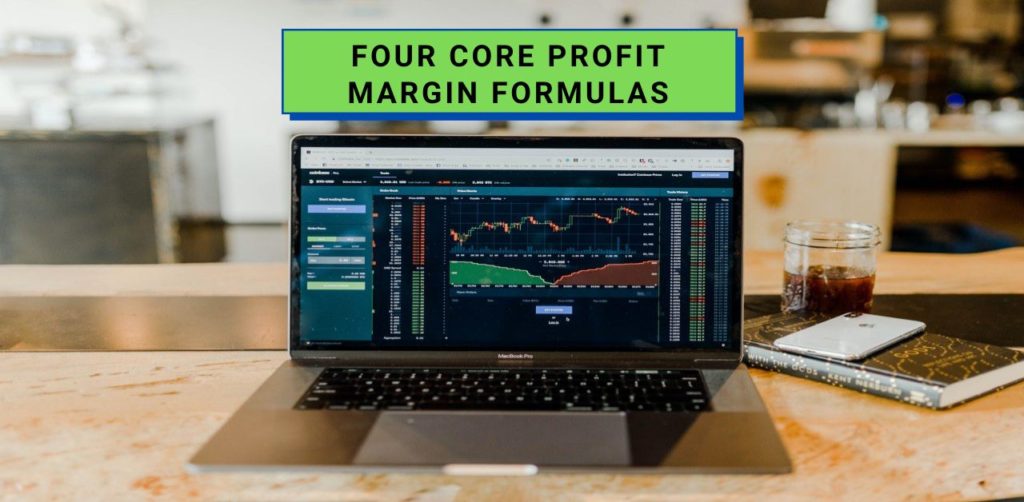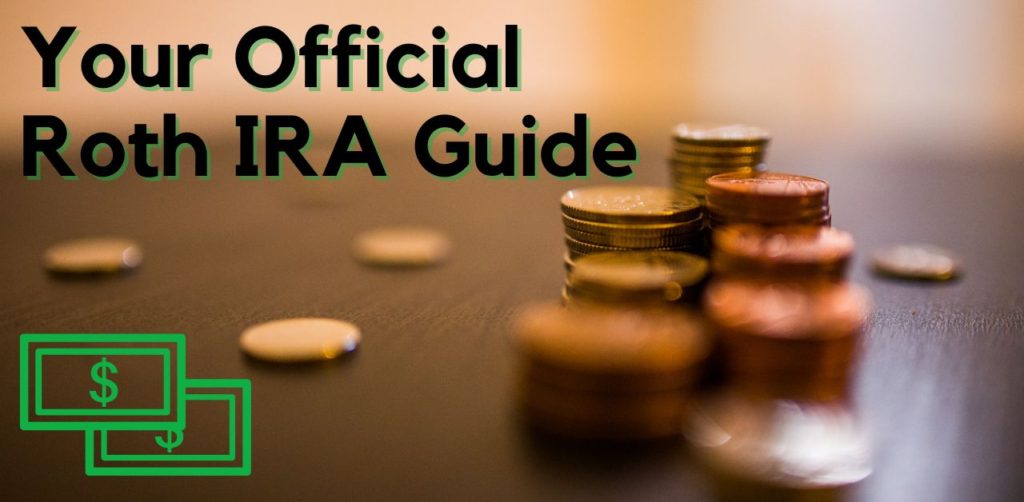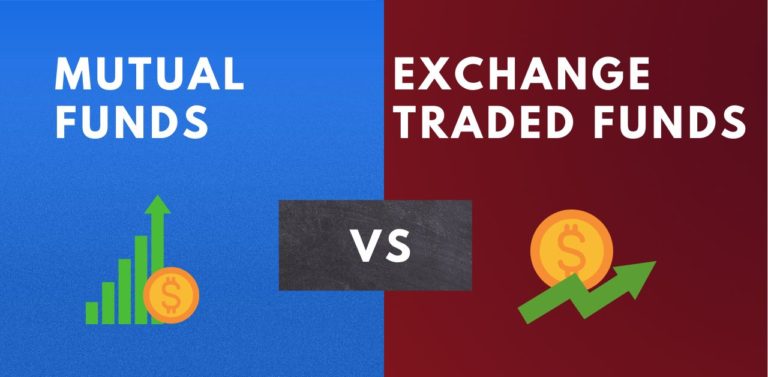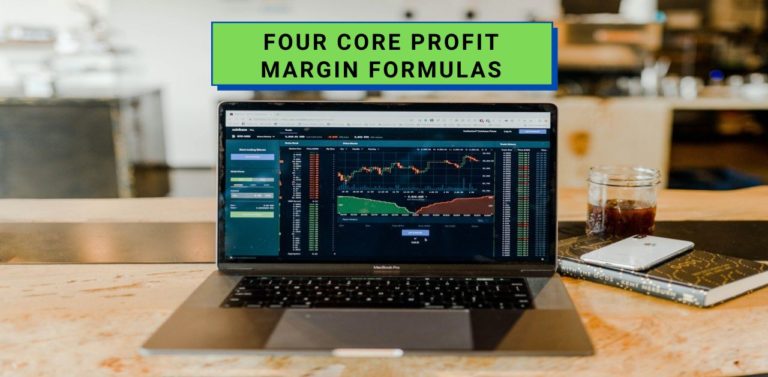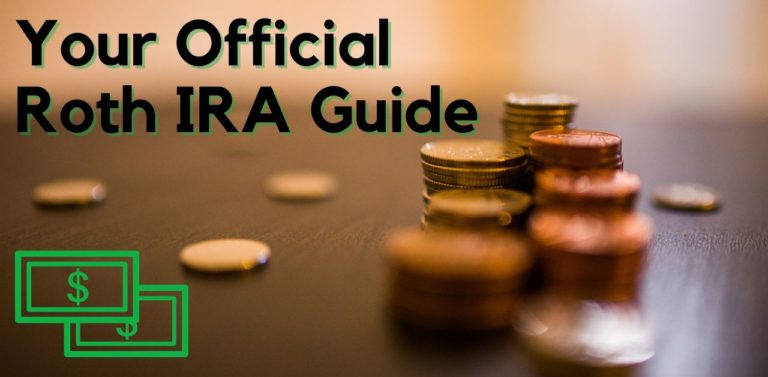Table of Contents
Introduction
When I first began investing, a big question that came to mind was, what should I start with? I wanted to diversify and have exposure in various areas of the market but I did not have much money to start off with.
To make it possible to diversify in equities with hundreds of dollars I learned about exchange traded funds (ETFs), index funds, and mutual funds. The mission of this blog post is to provide you with a comparison of ETFs and mutual funds and the benefits derived from each so that you have a good idea of which instrument you would like to invest in.

Since the first brokerage I used provided fractional share ETFs and I had a limited amount of money to invest, I began my investing journey with ETFs and learned how to use an ETF screener to find hidden gems in the sea of ETFs that exist to beat the market.
Exchange Traded Funds (ETF’s)
An exchange traded fund is a type of fund that holds a basket of securities. These securities can include bonds, commodities, stocks, currencies, real estate investment trusts, etc.
A single ETF can vary in the number of holdings it has and can range anywhere from the single digits to thousands of holdings. Each underlying asset within an ETF has an allocation percentage attached to it and the sum of these allocations will always be 100%.
For example, the SPYG ETF has a ~12% allocation in Apple, meaning that ~12% of the ETF is composed of Apple stock. Since ETF’s are a type of fund with multiple underlying assets, they are a great tool for diversification at a cheap price.
ETF structure can also vary. For instance, one ETF may hold hundreds of stocks across different industries or it could have a focus on one particular industry or sector and have 30 underlying assets.
Exchange traded funds are unique in that they trade just like stocks in the stock market. You can buy or sell ETF’s at any point during the trading day when the market is open.
Mutual Fund
A mutual fund is a type of fund that is composed of a pool of money collected from many investors used to invest in a multitude of securities like bonds, commodities, stocks, currencies, real estate investment trusts, etc.
These mutual funds are controlled by professional money managers that allocate the fund’s assets themselves with the objective of producing capital gains or income for the funds investors.
Each mutual fund has a prospectus, which is a packet or document that summarizes how the mutual fund is structured, the investment objectives of the mutual fund as well as the holdings of the mutual fund as of the date of the prospectus.
The valuation of a mutual fund is dependent upon the performance of the securities it decides to buy. When an investor purchases a share of a mutual fund, they are purchasing the performance of its portfolio or a segment of the portfolio’s value.
Main Similarities Between ETF’s and Mutual Funds
- Both contain a basket of securities that investor money is allocated into
- Each have the ability to track a market index like the NASDAQ or S&P 500 to match or outperform the market
- There may be fees associated with these instruments, known as the expense ratio.
- ETF’s and mutual funds are less risky than investing in individual stocks and bonds given that they are a basket of securities and are more diversified
- Both have the potential to be actively managed funds, even though mutual funds are much more likely to be actively managed than ETF’s
- They can both invest in the same type of asset classes
When an ETF or mutual fund tracks a market index like the NASDAQ, they are attempting to have similar returns and asset compositions as the index they are tracking, with the hope of providing slightly better returns as the index.
This tracking capability permits these types of ETF’s or Mutual funds to be more passive in nature, meaning that there is less supervision/turnover of the underlying assets as the index they are tracking maintains the same investments for a long period of time.
On the other hand, if the investment vehicle’s objective is more focused on beating an index or the market, the fund will be more active than passive.

Investment turnover and analysis takes place much more frequently from the professionals who actively manage the fund, resulting in higher fees. As noted above, these fees are referred to the expense ratio of the ETF or Mutual fund.
The more active a fund is the more likely it is that the expense ratio will be higher. The expense ratio typically ranges between 0% and 2%, meaning that for every dollar earned, the investment manager takes between 0% to 2% of that profit.
Primary Differences Between ETF’s and Mutual Funds
Passive Vs. Active Funds
When it comes to management, ETF’s are much more likely to be passively managed than mutual funds. Typically ETF’s have the mission to track an index and meet or slightly beat the performance of the index that they are tracking.
Since ETF’s are more passive in nature, it is more probable for them to have lower expense ratios than their active mutual fund counterparts.
While it is a possibility that actively managed funds beat passive funds in the short-term, it has been discovered that passive funds typically perform better than their active fund counterparts over the long-term.
Personally, I believe this is primarily due to our human nature. Even the professionals have moments where emotions take over the investing steering wheel and there are circumstances where good investments are sold and bad investments are bought.
Mutual funds usually have the primary objective to beat the market. In order to make this more likely, they are actively managed by investment professionals. This active management usually results in not only a higher expense ratio but in potential commissions as well.

Commissions and Minimum Purchases
In terms of commissions, ETF’s do prevail over mutual funds. Many of the large and commonly used brokerages have completely eliminated commissions on all of the ETF’s that they offer on their website.
Mutual funds are more likely to charge the investor commission fees that could be as high as 1 or 2% of the investment, sometimes even more. However, mutual funds are starting to minimize these commission fees as time progresses and many good mutual funds no longer charge these fees.
Some brokerages may charge an additional fee when an investor trades mutual funds. For instance, a $15 transaction fee per trade would equate to $180 in a year for monthly purchases.
When it comes to minimum investments, mutual funds are more likely to have a higher barrier to entry than ETF’s. Since these funds are more active rather than passive and are managed by professionals, the required minimum investment may be higher.
Sometimes a mutual fund can have a very large minimum investment in order to participate. There are mutual funds out there that will require the investor to purchase $1,000 or $3,000 worth of the mutual fund as an initial investment.
Not all mutual funds are created equal though. Some mutual funds do have a lower barrier to entry and use fractional shares where you can spend any amount of money to own a piece of that mutual fund. The fractional share feature is more likely to be an option with ETF’s.
How Mutual Funds and ETF’s are Traded
Mutual funds are priced and purchased at the end of each trading day. The investor has the ability to order the mutual fund at any time during the trading day but the order will not be completed until the exact price of the fund is tabulated at the end of the trading day.
An ETF is traded just like a stock on a stock exchange. You can purchase and sell them at any point in the trading day and they can be sold for varying bid and ask prices and the investor can view the price paid once the order is executed.
Dissimilar to a mutual fund, the investor may end up paying a higher or lower price than the fund’s actual net assets, albeit the difference is usually negligible. This intraday purchase or selling capability gives ETF’s the upper hand in this category.
How Distributions Work With Mutual Funds and ETF’s
When it comes to dividends, ETF’s typically have the upper hand over Mutual Funds. Mutual Funds are more likely to pay out dividends at the end of the year on an annual basis. Not all mutual funds behave this way, some do have quarterly dividends.
However, ETF’s are much more likely to provide the investor with more frequent dividends as they have less red tape than mutual funds due to their passive nature and hands-off approach.

Not all ETFs or mutual funds provide the investor with dividends. It depends on what individual investments are held within the fund. If what you are investing in is a fixed income ETF, it is more likely that this investment will pay out interest instead of dividends.
These dividends or distributions are categorized as either qualified dividends or non-qualified dividends.
- In order to receive a qualified dividend, the investor must hold an ETF for a period greater than 60 days before the dividend is issued. Qualified dividends are taxed at 5%, 15%, and 20% depending on your filing status and tax bracket.
- The dividend would be an unqualified dividend if the investor held the ETF for a period less than 60 days before the dividend is issued. Unqualified dividends are taxed at your ordinary income tax rate.
Security of an ETF vs. Mutual Fund
If we were to look at a mutual fund and an ETF that had the exact same underlying investments, both of them would have nearly the same risk. Given the active nature of the mutual fund, there may be more investment turnover, which may either mitigate or enhance risk depending on the fund manager’s choices.
Risk is primarily determined by the underlying investments of the ETF or Mutual fund. For instance, an ETF with 30 investments would be much more volatile/risky than an ETF with 1,000 investments. With higher risk comes a greater chance of higher returns or losses, a true double-edged sword.
Additionally, two mutual funds could have the same number of holdings, but one of them could have a higher risk than the other because they may have more holdings in an industry that is perceived to have a higher risk.
Tax Efficiency
ETF’s generally have the upper hand when it comes to minimizing taxes. One essential consideration is that mutual funds are mandated to distribute their realized capital gains at the end of the year.
Please note that this tax consideration only applies to investors with taxable investment accounts and not tax-sheltered accounts like an HSA, IRA, or 401(k). The distribution of these capital gains will be pre-tax and is something you would need to report to the IRS on your tax return and pay taxes on.

Active funds will typically have more taxable events than their inactive fund counterparts because of the increased frequency of buying and selling investments. With higher investment turnover comes greater capital gains or losses (with the former being more probable).
Which is right for me: ETF or Mutual Fund?
A mutual fund is right for you if:
1. You want a more hands-off approach – With the passive nature of ETF’s comes more of a responsibility to analyze the underlying holdings of the ETF. This becomes less of an issue when there is not a single stock that makes up 5% or more of an ETF
2. You prefer professional management – If you have greater comfort over professional investors actively managing your investments despite a higher expense ratio, investing in a mutual fund will be the better choice.
It would be wise to read about the fund’s management team and how the fund’s performance has compared to the index it is tracking or to the general market (S and P 500, Dow Jones, Nasdaq) if it is not tracking an index.
3. Low volume ETF – If the ETF you are looking to purchase has a low trading volume then there is a greater chance that the ETF will have a larger bid or ask spread meaning that the buy and sell price will fluctuate more.
When this happens there is a higher probability that the ETF will be trading at a premium, meaning that you would have to buy the ETF at a higher price, which may be more than it is worth.
Mutual funds always trade at their net asset value (NAV), so you would not need to worry about needing to buy an ETF at a premium that has low liquidity.
4. Investing in a riskier part of the market – Large cap companies typically have been around a while and their share prices are more stable. Some examples are Microsoft, Apple, Amazon, Alphabet, etc.
When you want to invest in micro, small, or mid-cap stocks that have larger share price volatility and are generally more risky than matured companies given their youthful stage in the company life cycle, an actively managed fund may be the better choice.
The fund managers will have greater expertise in these areas of the market and have sound rationale as to why they selected certain companies to invest in.
An ETF is right for you if:
1. You are an active trader – as mentioned above, ETF’s trade just like stocks and have intraday trades. You can engage in limit orders, stop orders, and shorting with ETF’s but cannot do the same with mutual funds
2. Minimize management fees – given their greater passive nature, ETF’s are more likely to have lower expense ratios due to the more hands on or active management of mutual funds
3. Greater tax efficiency – as mentioned above, this point only applies to taxable investment accounts and not tax-sheltered investment accounts
Greater investment turnover in active funds will typically result in greater short-term gains that are taxed at a higher percentage than their long-term gain counterparts.
Mutual funds are required by law to distribute realized capital gains by the end of the year which you will most likely be required to pay taxes on even if you did not sell any shares of the fund during the year.
4. Lower minimum investment – Any given mutual fund is more likely to have a larger investment minimum than an ETF. The higher barrier to entry is primarily due to their active fund management style.
ETF’s are not only less expensive on an individual basis but are more likely to have the fractional share feature so that you have the ability to invest in that ETF without holding a full share of it.
5. Switching to a different broker – Given the specialized active management nature of mutual funds, when switching from one broker over to another, you will most likely need to sell your position in your existing mutual fund and find another similar mutual fund to invest in at your new brokerage.
There would be a much greater likelihood that your new brokerage offers the same ETF’s you were invested in with your old brokerage and the transfer process of your investments would go a lot smoother.
Reader Engagement
For the new investors, what type of investment are you interested in starting with? Existing investors, did you start with mutual funds, index funds, individual stocks, ETF’s, or something else? Thank you for reading this post, I hope it brought you some insight and I look forward to reading your comments!

